Despite changing landscape, outlets must still cater to target audiences to remain relevant
Ten years ago, Andrea Courtois was just starting her career as an assignment editor in Providence, Rhode Island. Ten years ago, Rafat Ali was in the throes of his first startup, paidContent. Ten years ago, Justin Ellis was a reporter and columnist for the Portland Press Herald of Maine.
Ten years may not seem like a long time to anyone over the age of 30, but in the world of journalism, ten years has meant significant changes and adaptation. Though the three journalists just mentioned came from different media within the same industry, and had very different ways of conducting their jobs ten years ago, now how they research stories, cultivate sources, and follow leads is nearly identical. Nearly all of it is done online.
Courtois is now an assignment editor in Boston; Ali has sold his first startup to Guardian Media Group and launched a second, Skift; and Ellis is an assistant editor at the Nieman Journalism Lab.
All three of them are quite aware of the changing dynamics of digital journalism. “Print and magazines have their place,” said Ali via Skype. “But daily newspapers in the U.S. do not make sense economically.”
Ali created his first startup, paidContent, in 2002 as an online news outlet that focused on aspects of digital media including business dealings, moves, and general news. In 2008, he sold this startup to Guardian Media Group. He took some time off, and in 2012 launched his new startup, Skift. Skift’s business model is providing news, information, data, and services to all sectors of travel.
In order to be sustainable, outlets need to diversify and think about other ways to brand themselves, suggested Ali. In addition to writing articles, sharing data, and engaging with readers via social media channels, Skift also hosts conferences and events. “There is a creative renaissance in conferences and events,” said Ali. “I think TED changed how we look at things, that we can build events around a certain subject manner. The Atlantic, Quartz, (The) New York Times, they’re all building revenues around events.”
PHOTOS: 15 minutes as a television assignment editor
Inviting audiences to events can help readership and loyalty. And so can engaging them online. Courtois tries to do that every day as an assignment editor at WBZ-TV. During a recent interview, Courtois said there’s a wide variance of acceptance of digital journalism throughout television newsrooms. She indicated that the level to which these newer platforms are used to enhance the traditional one depends on direction from news directors, producers, and ownership.
For her own growth and knowledge, Courtois said she takes the lead in many cases. “I try to check out whatever everyone is talking about,” she said. “Whether it’s Instagram or Snapchat or anything else, I usually sign up for an account to at least check it out.”
Whereas ten years ago Courtois would spend her time reading newspapers online or in print, these days she spends most of her time using TweetDeck cultivating stories for her crews.
“I set up (a reporter’s) entire story yesterday using Twitter,” she said, while sitting at her desk. “And people will tweet me tips all the time.”
As she said this, she stopped mid-sentence to turn up the volume on the police scanner to listen to a dispatcher talk about a reported attempted abduction. Courtois still uses more traditional means to get stories – whether it be a police scanner, email, or a simple phone call – but she said social media and digital journalism are what get most of her attention these days.
She even remembers when she signed up for Facebook in April 2007. “It was the day of the Virginia Tech shooting,” she recalled. “I had an intern tell me about Facebook, and I signed up to try to find students from Rhode Island who were there.”
“I also work to get permission from people to use their photos,” Courtois said. “Once I get that, I email it to everyone from reporters to producers to graphic designers, to let them know the information and the appropriate credit.”
The pictures and videos she finds online travel fast, much faster than when there was just one evening newscast and a morning paper.
Justin Ellis spends a lot of his time at Nieman Journalism Lab evaluating from where journalism has come and where it’s headed.
“Newspapers are not dead,” he said decisively during an interview at the Nieman Foundation at Harvard University. “But they need to figure out different ways to be more effective in how they’re distributed.”
Ellis went on to say that The Washington Post and The Boston Globe have recently been able to lean on wealthy owners to evaluate their next steps, including how to reach and serve audiences, which includes a heavy focus on mobile devices.
“A news website now has more than 50 percent of its traffic from mobile,” he said. “Places need to pay attention to creating custom experiences on mobile.”
Ellis doesn’t necessarily see it as a dire time in the news industry, but every outlet needs to figure out what its audience wants and needs. He said those outlets then need to be able to service that need.
“When you’re not consumed by scale, it lets you hold on and thrive,” he said. He pointed out that niche organizations, like Ali’s Skift, don’t need to be all things to all people, but they do need to do what they’re doing well. “These small- to medium-size websites with a dedicated audience can do really well,” explained Ellis.
But if editors and owners want their outlet to reach the largest possible audience without being true to a dedicated audience, it may not do as well. Ellis added that niche doesn’t need to be as specific as a media outlet that solely focuses on small businesses; it can be local television stations or newspapers. “The news in Boston is different than in Lowell than in Springfield than in Portland,” he said. “But readers of The Boston Globe aren’t going to the site just for Patriots news; they want to know about news in their community.”
Ellis said in order for news organizations to continue building community they need to focus on their social media presence and the comment sections of their websites. Ellis said Twitter has become an accepted source and not a fringe tool, and fewer people are skeptical of it. But the audience there is still small, and the reach is far smaller than on Facebook. “The people on Twitter are generally people in media or tech or work in entertainment. Electronic media for them is already the norm,” he said. Instead, organizations need to be active on Facebook, Tumblr, Reddit, and pay attention to their comments.
“We’ve reached a point with comments where in order to make them effective, they [news organizations] need to know what their goal is,” Ellis explained. Additionally, outlets need to spend time moderating them, putting effort into watching them, and laying down the law on what is acceptable and what is not early and often.
Recently Kara Swisher’s latest venture, Re/code, decided to go the way of Reuters and eliminate comments on articles. The time spent monitoring comments on their own site wasn’t worth it, Ellis said. Instead, Swisher and the site’s co-founder, Walt Mossberg, wrote to readers that the conversations would continue on social media platforms. “In effect, we believe that social media is the new arena for commenting, replacing the old onsite approach that dates back many years,” they wrote.
“In an ideal world, investors would be discussing things (in the comments section), but they don’t have the time to put into that,” Ellis said. “Frankly, the conversation takes place on Twitter.” But that conversation is segmented, there’s no community, and it’s limited to 140 characters at a time, he added, which doesn’t necessarily help to build brand.
While it’s unclear where journalism is headed, all three seem to agree there is an expected focus on community, digital footprint, and mobile. But how news organizations, big and small, get there isn’t clearly outlined. For now, as Ali explained, organizations will need to focus on making themselves and their product so important to their customers that if that product went away tomorrow it would be missed.

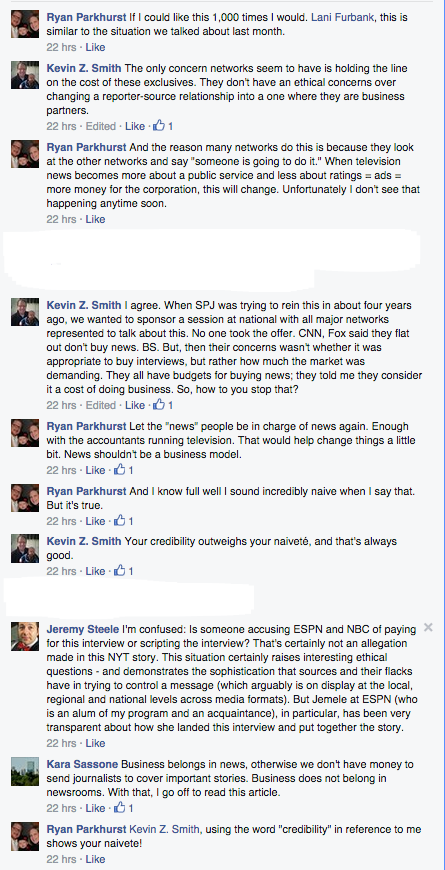
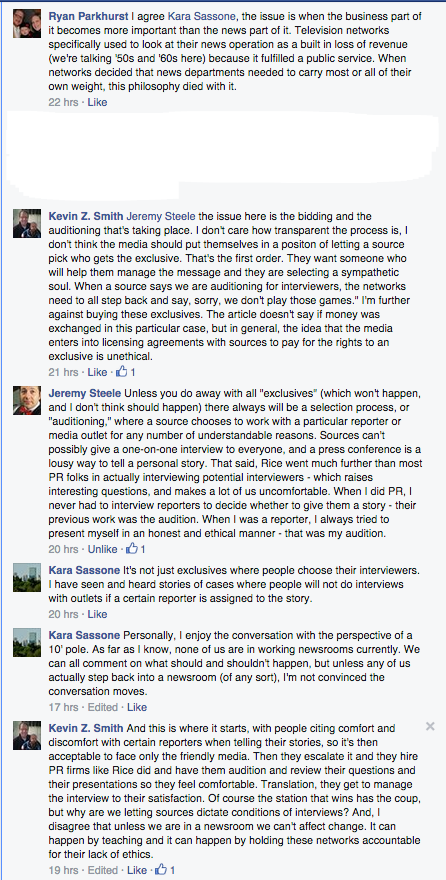
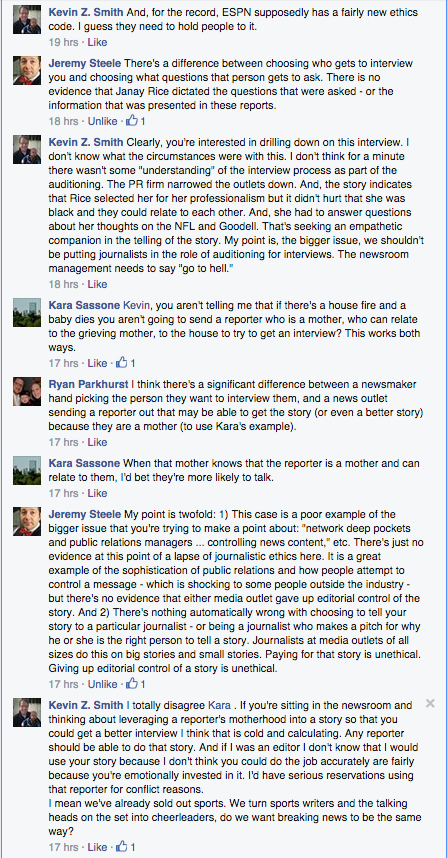
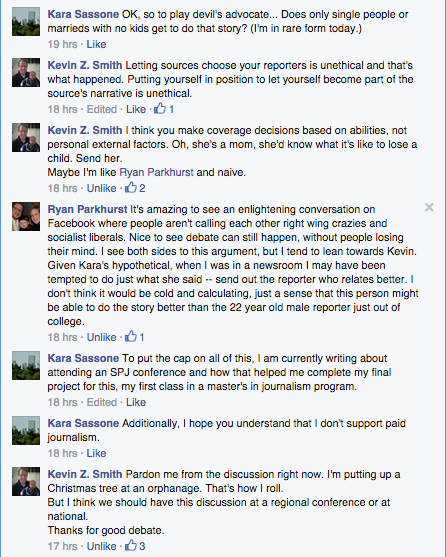







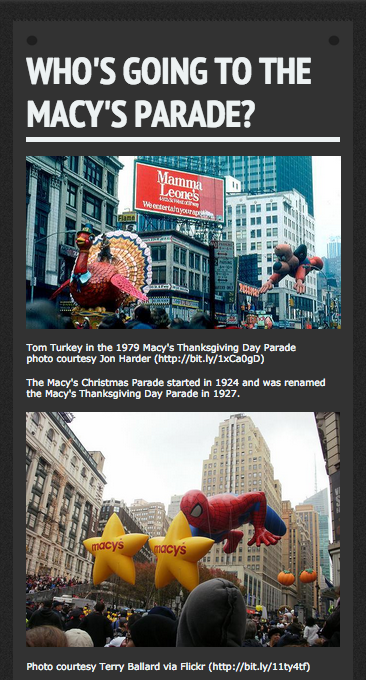
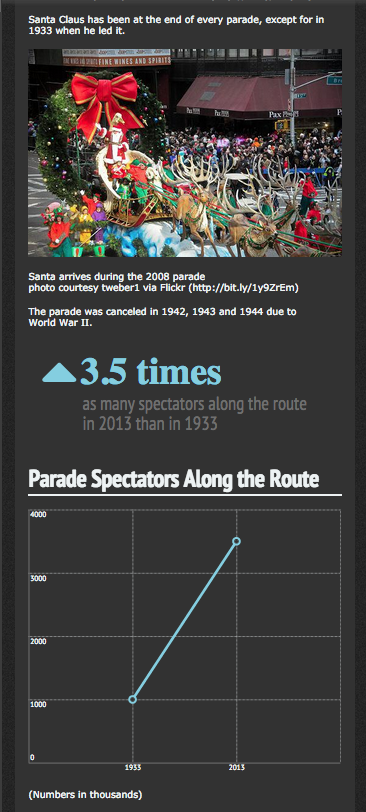
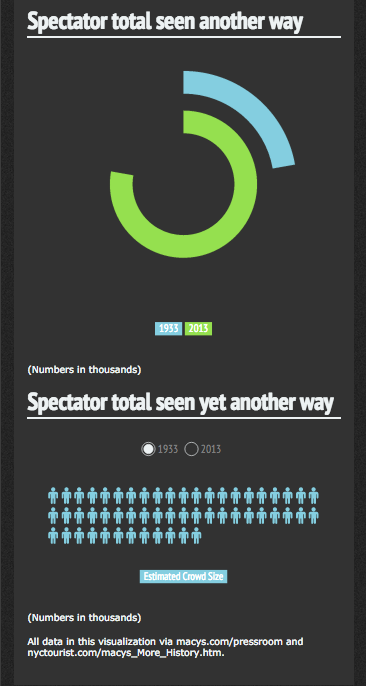
 Apparently in Bristol, CT, yes, an employer can keep you from tweeting.
Apparently in Bristol, CT, yes, an employer can keep you from tweeting. 
 Every time I walk into
Every time I walk into  The waiting area is not large, nor is the seating area, so I generally get mine to go, but the few times I have stayed to eat in the restaurant, it’s been enjoyable. There’s a lot going on, many faces to watch and foods to think about getting next time.
The waiting area is not large, nor is the seating area, so I generally get mine to go, but the few times I have stayed to eat in the restaurant, it’s been enjoyable. There’s a lot going on, many faces to watch and foods to think about getting next time. Because of the amount of foot traffic, including nearby students at Northeastern University and The Boston Conservatory, Lutfi said they do minimal advertising. They are, however, on
Because of the amount of foot traffic, including nearby students at Northeastern University and The Boston Conservatory, Lutfi said they do minimal advertising. They are, however, on 